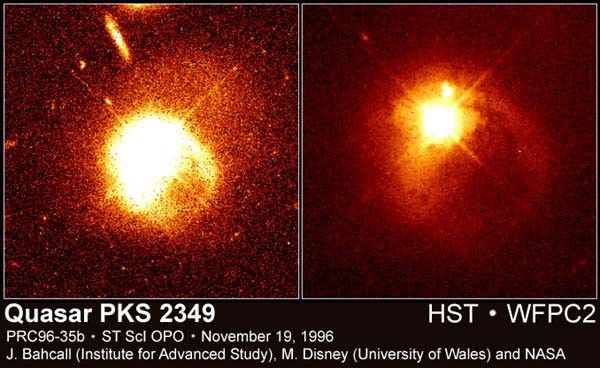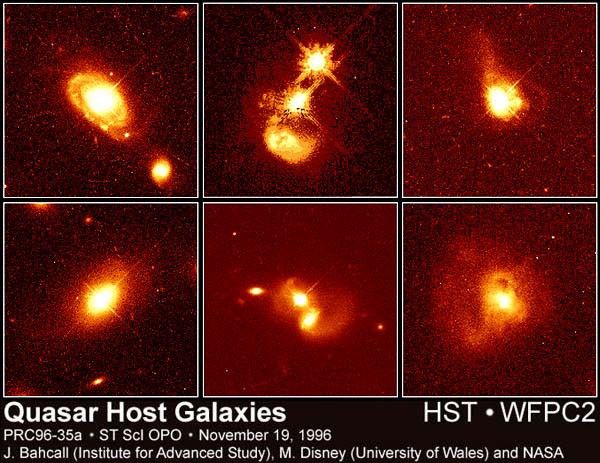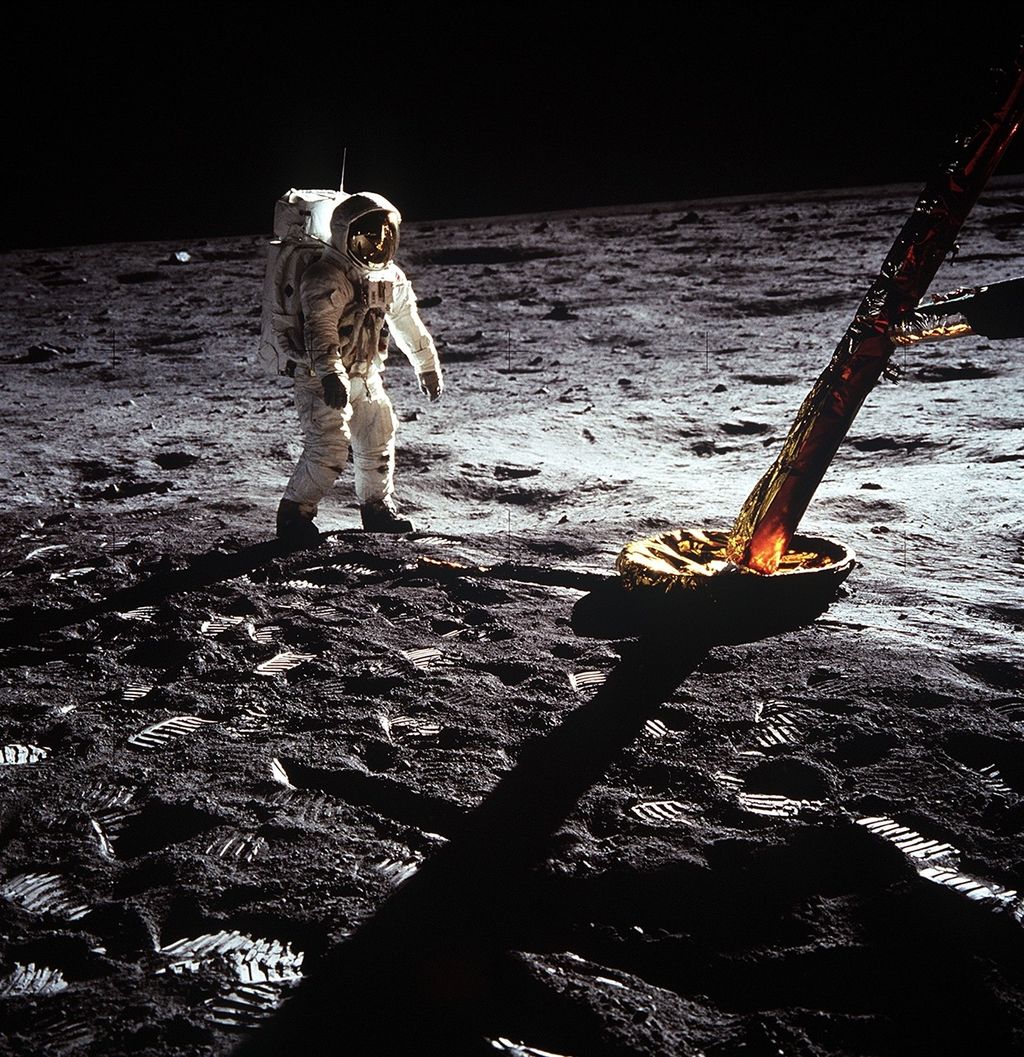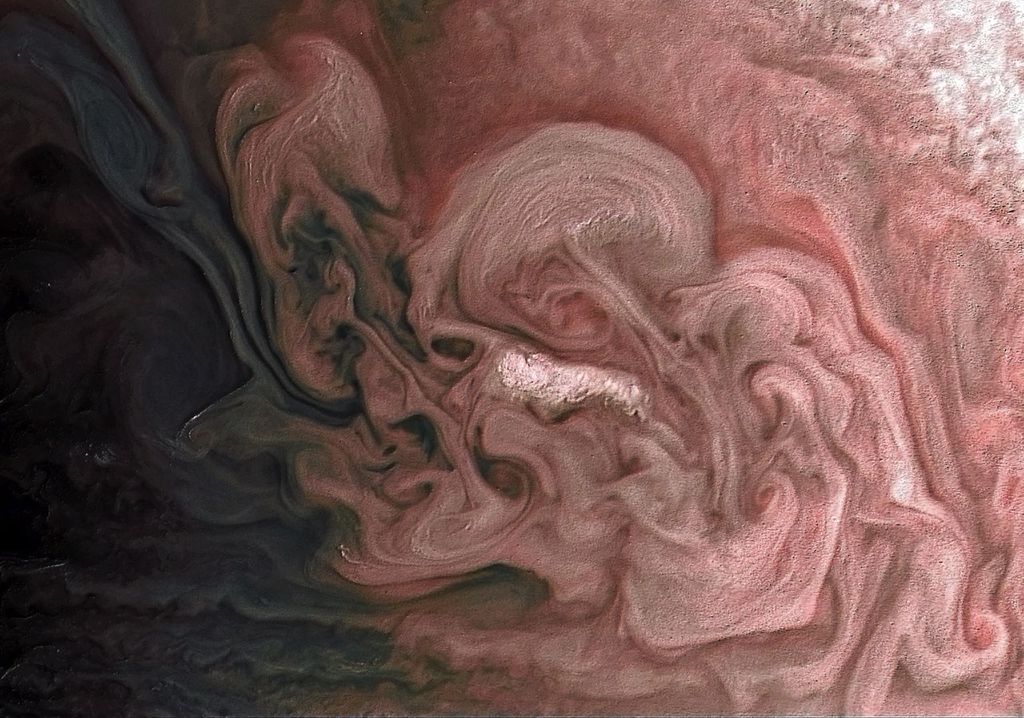1 min read
A Quasar’s Companion Galaxy (left) and Galaxy Nucleus (right)

Images taken by the Hubble Space Telescope have allowed astronomers to clearly see the link between quasars and their companion galaxies. Some quasars, such as the one in this two-panel image, have been caught in the act of merging or colliding with their companion galaxies.
The image on the left reveals the huge, thin tidal arms of a galaxy associated with the luminous quasar, which is 1.5 billion light-years from Earth. The odd-shaped arms suggest an encounter between the quasar and a companion galaxy. The thick bright line above the quasar is an edge-on background galaxy.
In the right-hand panel, the same image is shown at a different contrast level, which enables astronomers to peer closer into the galaxy's nucleus. Only 11,000 light-years separate the quasar and the companion galaxy (located just above the quasar). This galaxy is similar in size and brightness to the Large Magellenic Cloud galaxy near our Milky Way. The galaxy is closer to the quasar's center than our sun is to the center of our galaxy. The quasar and galaxy are drawn together by strong gravitational forces. Eventually, the galaxy will fall into the quasar's engine, the black hole. Black holes are believed to power the compact, energetic quasars. The black hole will gobble up this companion galaxy in no more than 10 million years.
The quasar in these images appears large, but actually, it is a compact, yet powerful light source. The quasar is so bright that it created diffraction spikes on these telescope images.
- Release DateNovember 19, 1996
- Science ReleaseHubble Surveys the “Homes” of Quasars
- CreditJohn Bahcall (Institute for Advanced Study, Princeton) and NASA
Related Images & Videos

A Survey of Quasar Host Galaxies
Quasars reside in a variety of galaxies, from normal to highly disturbed. When seen through ground-based telescopes, these compact, enigmatic light sources resemble stars, yet they are billions of light-years away and several hundred billion times brighter than normal stars. The...
Share
Details
Claire Andreoli
NASA’s Goddard Space Flight Center
Greenbelt, Maryland
claire.andreoli@nasa.gov





























